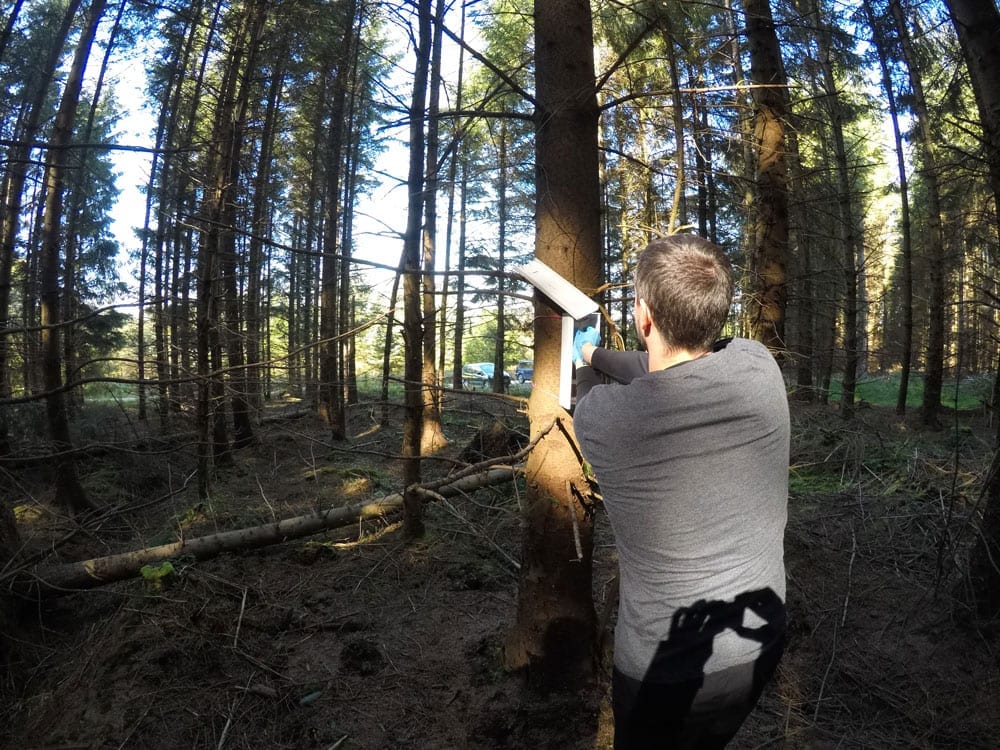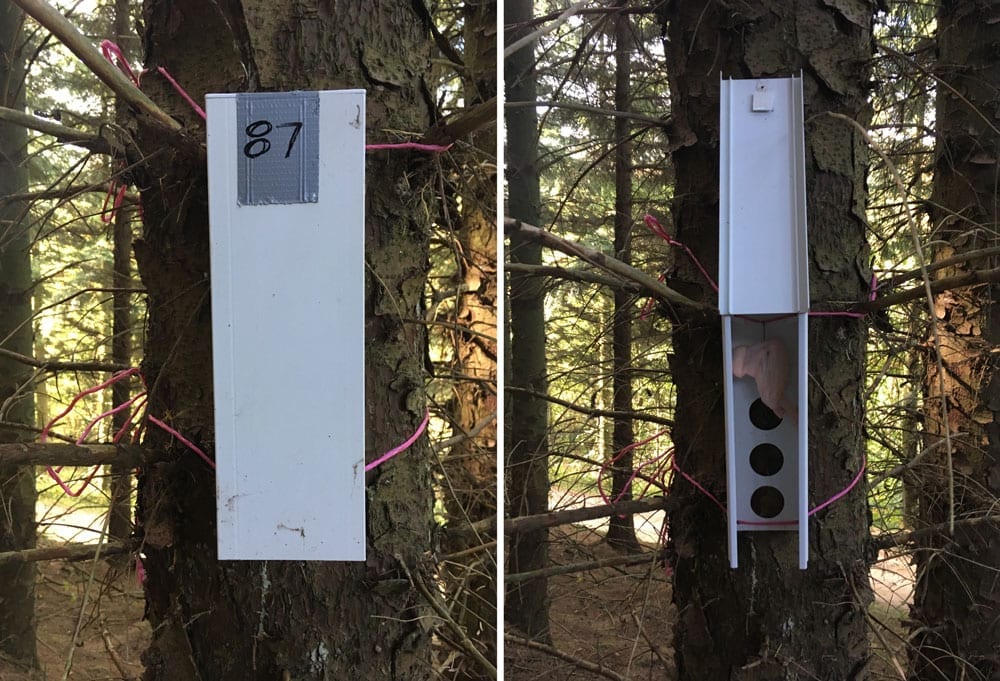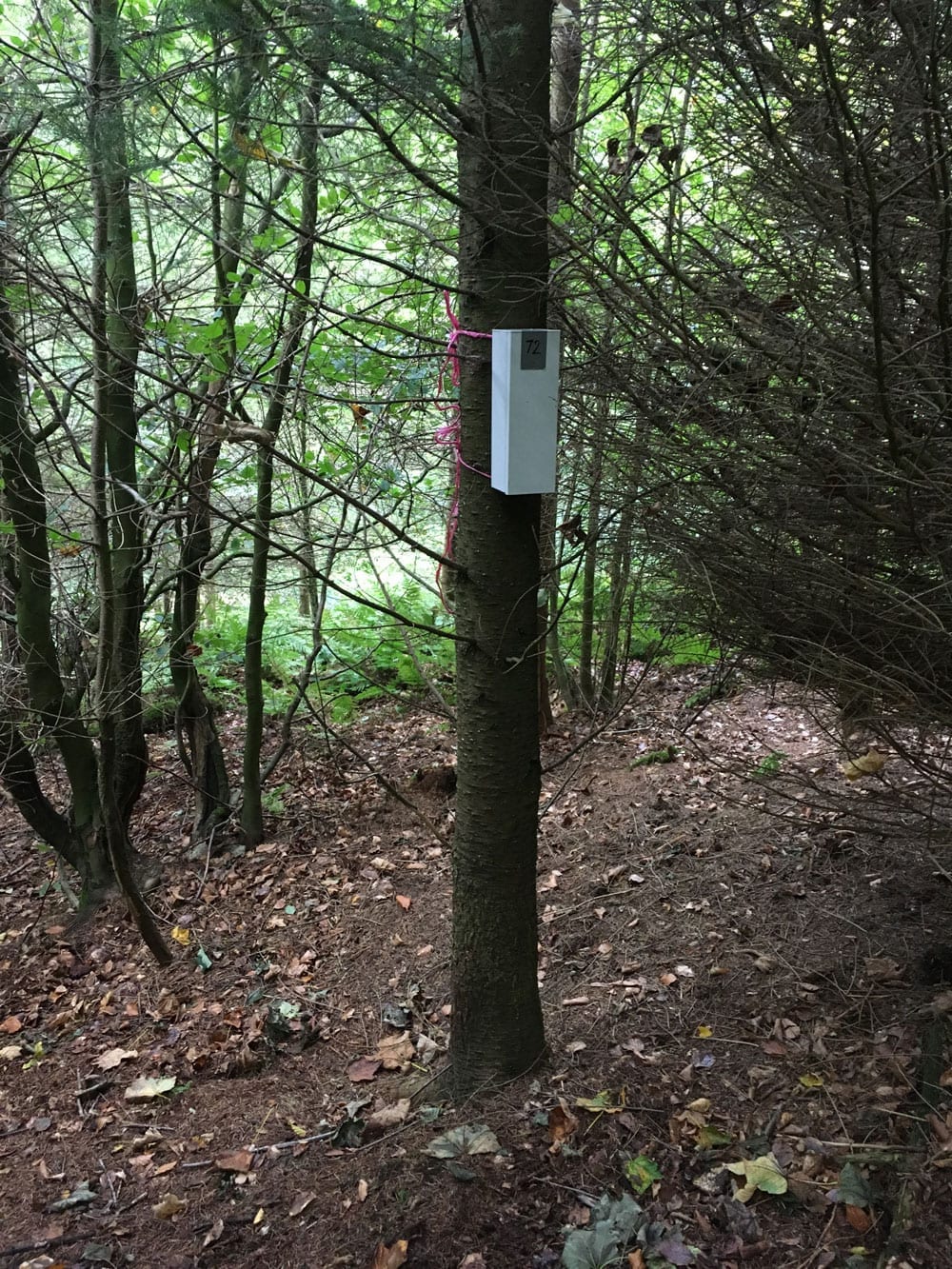By Ed Snell, Yorkshire Pine Marten Project Officer

One of our objectives of the Yorkshire Pine Marten Support Programme, supported by the Heritage Lottery Fund, is obtain pine marten DNA so we can establish their origin and identify individual martens. There are two common ways of doing this; through analysis of their scats or hair samples. We’ve recently completed our first DNA survey covering roughly 30km² of forest using 30 hair tubes.
Hair tubes are designed to capture hair from a target species. Bait is placed at one end of a tube and a small sticky pad is attached near the entrance, so that when an animal takes the bait it leaves a hair sample behind on the pad. Sounds like a pretty good trade, right?

One benefit of using hair tubes to study pine marten is that is it’s a highly targeted method (unlike camera traps that will record everything that passes by!). There are very few animals that could reach the bait when it’s at the end of one of these tubes attached to a tree 6ft off the ground. The tubes we’ve been using were designed and made by John Martin, who has a wealth of experience working with pine marten. John has refined this design to make them as pine marten-friendly as possible, so they’re the right size for martens to access, but difficult to get to for other animals that may be interested, namely dogs, foxes and badgers!

We did not collect any hair samples from our first hair tube survey, and whilst this is a bit disappointing because we’re keen to learn more about pine martens in Yorkshire, it does give us some useful pointers. This could suggest that there are not currently any martens in this patch, however this is by no means conclusive, as there’s no guarantee that martens will find the bait, let alone be eager enough to venture into the tube to retrieve it!
This first hair tube survey covered around 20% of the total area that we survey in on the North York Moors, so there’s still plenty more areas to explore. Hair tubes are a great complementary survey method to our camera trap surveys as they can offer very different information about martens, yet both methods can be used in the same area effectively.
Now that we have our initial experience of running hair tube surveys, we can look to refine our approach and use hair tubes in more responsive ways. For example, the next time we pick up a marten on a camera trap we can look to locate hair tubes near that site in the subsequent weeks, as they tend to be creatures of habit and return to spots where they find food.
Although our hair tubes remained untouched for most of the 5 weeks, we did have one or two very persistent visitors (500+ camera trap videos!!!)…
Special thanks to our excellent volunteers for assisting with the hair tube surveys, John Martin for his guidance and advice, and to the Forestry Commission in Galloway for loaning us the hair tubes.
The method we used for this hair tube survey was adapted from Croose et al, 2015.
